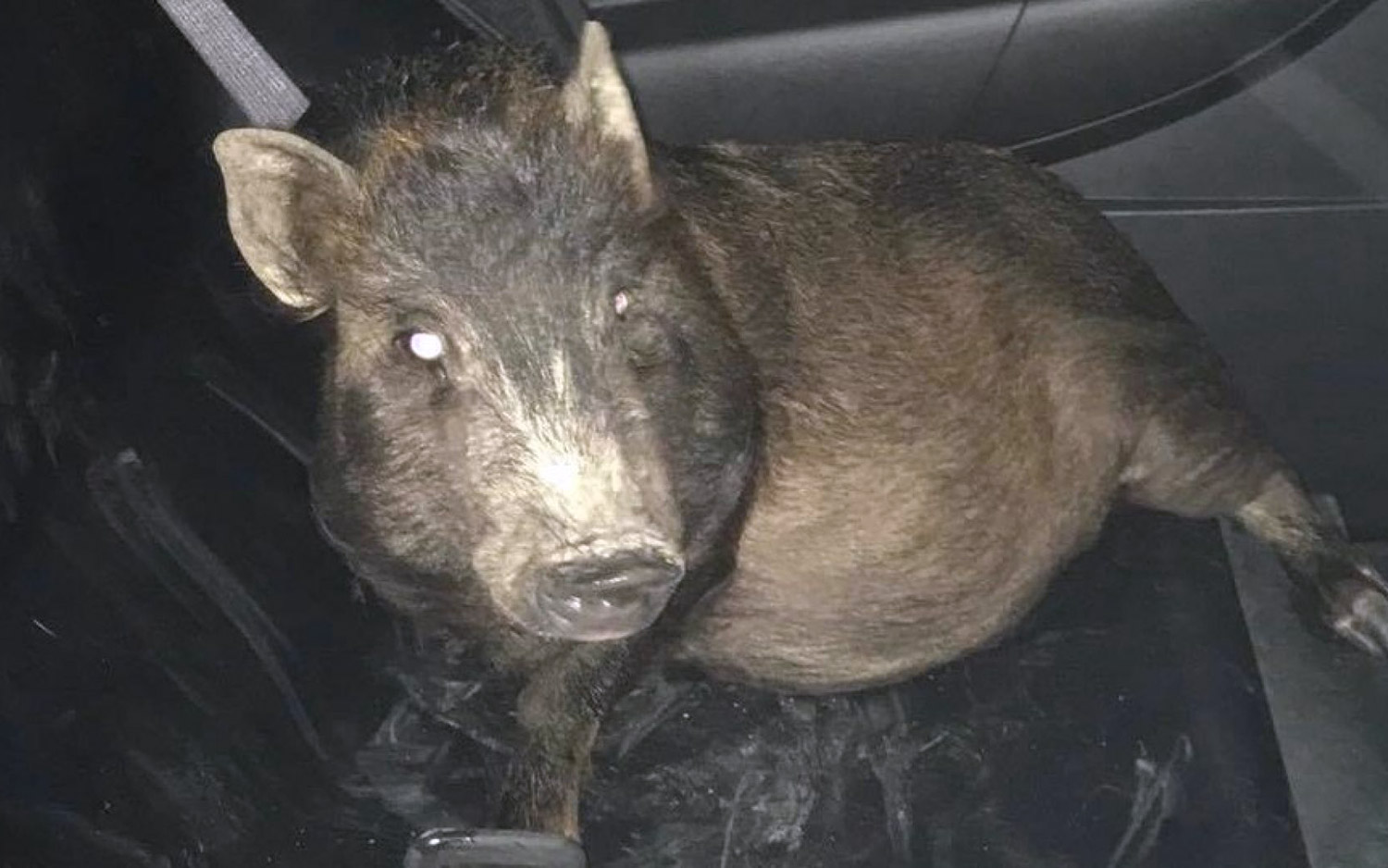Why Would a Pig Follow a Man Home?

Ohio police received a call at 5:26 a.m. Saturday (May 19) from a man who said he was trying to walk home from an Amtrak train station in Elyria but was being followed … by a pig. The man was unsure how to react.
The police thought he was drunk and possibly hallucinating, but when they arrived at the scene, they found a sober man who was indeed being followed by a pig, according to CBS News. The police brought the pig, whose name turned out to be Zoey, back to the station, and eventually, the animal was given back to its owner.
But why would Zoey be following an unknown human around?
It's most likely because the pig was curious, said Lori Marino, an animal behavior expert and neuroscientist. "Pigs are very social animals," Marino said. "There must have been something about this man that this pig was curious about."
In fact, pigs can be just as social as dogs, and "every bit as smart" — if not smarter, Marino told Live Science. [The 5 Smartest Non-Primates on the Planet]
This may sound surprising to some people — particularly in Zoey the pig's case, where you see a pig acting as a dog might, Marino said. "But if you know about pigs, it's just not that surprising," said Marino, who is also an animal rights activist and the founder of the Kimmela Center for Animal Advocacy.
Zoey was a domesticated pig and was obviously very comfortable with humans, Marino said — just look at the image of her sitting in the back of the police cruiser. Pigs are not loners; they have social relationships with other pigs and other animals, including humans.
Get the world’s most fascinating discoveries delivered straight to your inbox.
And although curiosity was probably the reason Zoey followed the man home, there are a few other possibilities for the pig's early-morning stroll, Marino said. For example, if the man smelled like food or had food in his pocket, it could have enticed Zoey, just like it would other animals, she said.
But Zoey also could have been trying to get the man's attention. Pigs are "very sensitive to whether or not you're paying attention to them," Marino said. "They understand that if you're looking at them … you are attending to them, and if you're facing away from them that you're not." So maybe Zoey was just trying to get this man's attention, but the man kept walking away, Marino said.
But whatever the reason may be, it's doubtful that Zoey was lost. "Pigs have really excellent spatial mapping skills," Marino said. For example, they can recognize landmarks and are brilliant at making their way through mazes, she added. This ability allows them to find food and know where they've previously scavenged. Pigs "typically don't get lost unless you drop them off somewhere where they are completely unfamiliar."
And "there's no chance" Zoey could've mistaken this man for her owner, Marino said. "They're just way too smart for that." According to Marino, many studies have shown that pigs can tell individuals apart — not just pigs, but different humans, for example. "They are very sensitive to features that are consistent with personal identity," such as body size and facial characteristics, she said. [7 Things That Will Make You Happy]
It's possible that Zoey does this type of thing all the time to people and thinks of it as a game or a routine, and this guy just happened to put it on our radar because he called the police, Marino added.
Or maybe Zoey wasn't even following him at all. "They might just have the same path that they walk," Marino said.
Editor's note: This article was updated May 22 to correct a statement about pigs being able to recognize different dog faces.
Originally published on Live Science.

Yasemin is a staff writer at Live Science, covering health, neuroscience and biology. Her work has appeared in Scientific American, Science and the San Jose Mercury News. She has a bachelor's degree in biomedical engineering from the University of Connecticut and a graduate certificate in science communication from the University of California, Santa Cruz.


